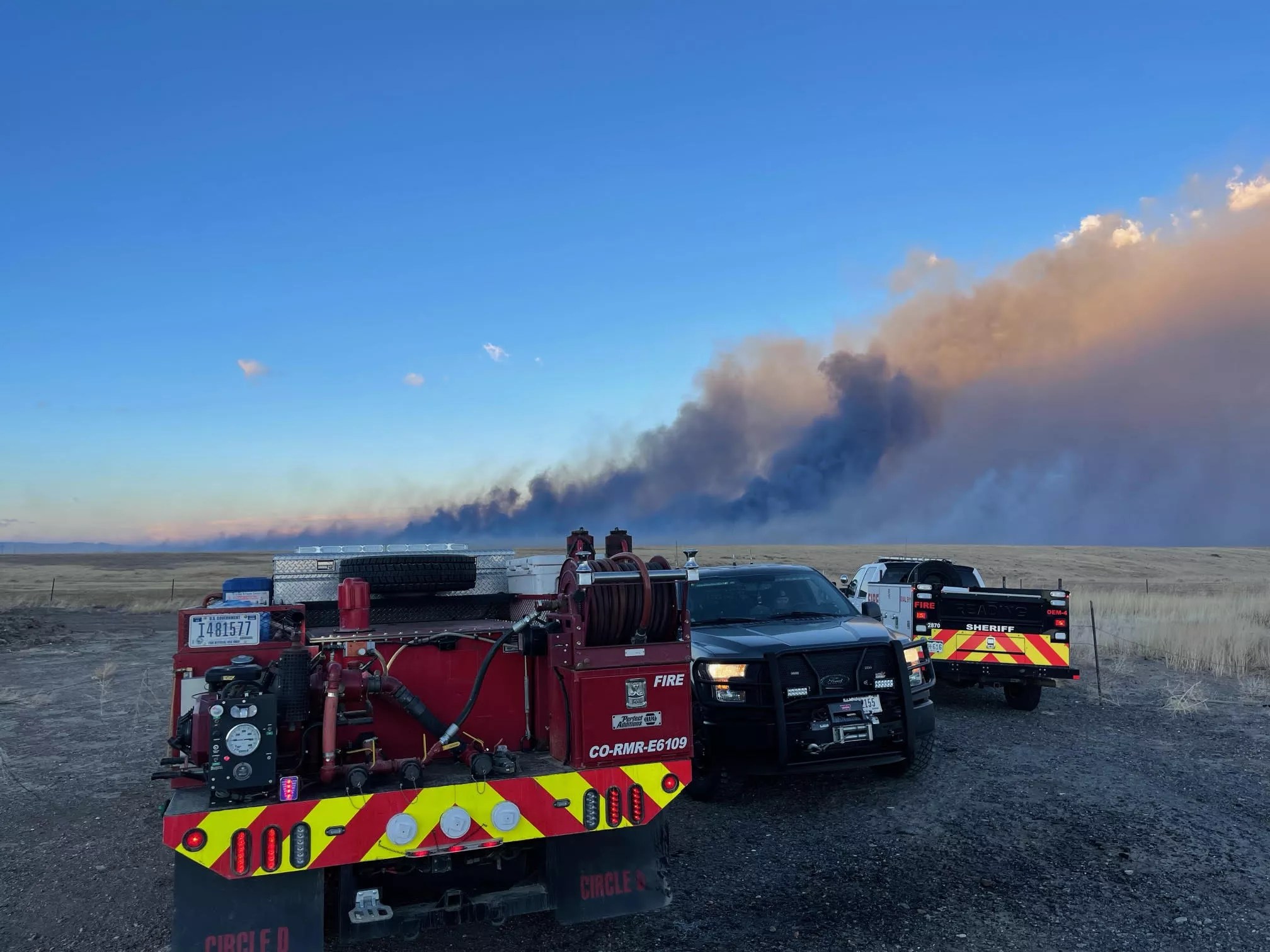
U.S. Fish and Wildlife Service

Audio By Carbonatix
Colorado’s 2024 wildfire outlook projects a normal year – which now means there will be about 5,500 blazes expected to burn some 220,000 acres of land in the state.
Colorado’s wildfire prevention officials gathered in Jefferson County today, April 17, to discuss the outlook. During a press conference, Mike Morgan, director of the state Division of Fire Prevention and Control (FPC), said that smaller fires are projected, but a large blaze is always possible.
The year’s average snowpack, slightly above-average temperatures and slightly low precipitation indicate the normal fire season, according to Morgan. However, he’s concerned about grasses and plants that will grow as moisture dries out, providing fuel for fires later in the year.
“As we look further out in the forecast, it becomes a little less reliable,” he said at the event. “We’re not seeing a lot of confidence in high monsoonal moisture that we normally see. … What we rely on is those monsoons to keep those plants green through the rest of the summer and year. That makes me a little nervous when we’re not seeing the monsoon forecast.”
Additionally, fire danger is slightly elevated in southeast Colorado as moderate drought conditions exist in the San Luis Valley.
Wildfire season used to be four months in the summer but now lasts year-round, according to Morgan. The state now prepares for the worst even though the projection doesn’t indicate an elevated number of blazes is likely.
“In the last five years, we’ve seen the three largest wildfires in the entire history of Colorado and the most destructive fire in the history of Colorado,” Governor Jared Polis said at the press conference. “Future wildfires are not a question of if. It’s just a question of when and where and what we’re going to do about it.”
In 2022, nearly 42,000 acres of land burned in Colorado, according to the most recent report from the National Interagency Fire Center, a federal project that tracks fires. In 2023, wildfires burned 2.7 million acres across the country.
Stan Hilkey, executive director of the Colorado Department of Public Safety, said wind events are expected to drive fire activity this year. Earlier this month, Xcel Energy preemptively shut off power lines in Boulder and Jefferson counties during a high wind event with the stated goal of preventing a wildfire.
“I can confidently say that we are faster, we are better, more efficient,” Hilkey said of wildfire response in Colorado. “We’re more aggressive on initial attack. We’re more competitive. There’s more cooperation, more mitigation. It’s simply that we are smarter on fire.”
State officials emphasized that over 80 percent of wildfires are started by people, so responsibility with flames and respecting fire restrictions and bans is a necessity.
Colorado has deployed a statewide dispatch system to help local first responders decrease response times to fires.
“Firefighters across Colorado are locating and attacking fires when they’re very small, increasing our success and limiting fire size, duration and impact in areas where we don’t want wildfire,” Morgan said. “This happens on almost a daily basis. Most of these fires, about 99 percent of them, are quickly extinguished.”
In 2022, Polis issued an executive order to allow state employees who serve as volunteer firefighters and first responders to take five days of leave without using their vacation time if they’re responding to a fire. At the April 17 press conference, he said he hopes private-sector employers will follow his lead.
Additionally, officials emphasized clearing old wood and other fuels, which is being done across the state, often with the help of the nonprofit Colorado Climate Corps.
“We’re also working with the U.S. Forest Service and Colorado state fire chiefs on the Live Wildfire Ready public outreach campaign, which shows the steps we can all take to lower wildfire risk to homes and properties,” Polis said. “Checking areas close to homes and buildings – roofs and decks and gutters – for materials that serve as fuel, removing branches and hay closest to roofs for fire mitigation, makes a real difference.”
Hilkey added that people should sign up for local emergency alerts and have an evacuation plan, encouraging residents to self-evacuate if they see a fire and feel uncomfortable, even if an official evacuation order hasn’t been issued.
The state has also invested in a Firehawk helicopter that will stay at the Rocky Mountain Metropolitan Airport in Broomfield. It can fly anywhere in the state within the hour to fight fires from above, according to state officials, and will be ready for operations shortly. The state has authorized funds for a second one to be delivered next year, as well.
These wildfire predictions last through July, so the numbers could change in the second half of the year. The FPC anticipates a high potential for elevated risk going into the fall, but Morgan says it’s too early to tell.
The state will face those fires head-on, according to the governor.
“I’m very proud to say we’ve never been more ready,” Polis said. “That doesn’t mean that fires won’t come and could be devastating. But Colorado has really upped our game on fire preparation.”